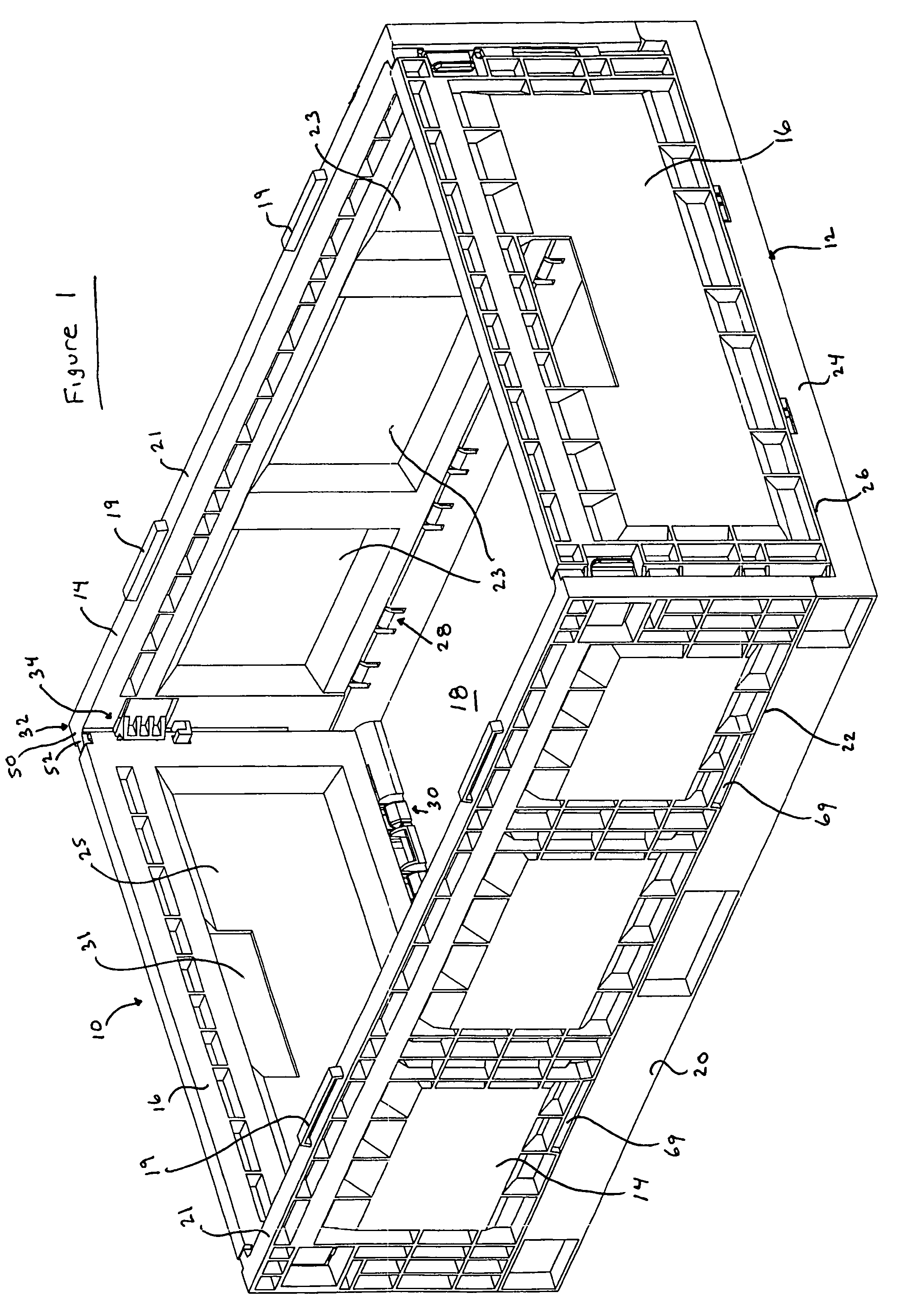Collapsible container
a container and lid technology, applied in the field of collapsible containers, can solve the problems of inconvenient human use, inability to use automated equipment, and devices with hinge mechanisms that are difficult or inefficient to manufacture or clean, and achieve the effect of more rigidity and sturdy
- Summary
- Abstract
- Description
- Claims
- Application Information
AI Technical Summary
Benefits of technology
Problems solved by technology
Method used
Image
Examples
Embodiment Construction
[0038]A collapsible container 10 according to the present invention is illustrated in FIG. 1. Container 10 is rectangular in shape and is generally symmetrical about each center line. Container 10 includes a base 12 and upstanding perpendicular opposing side walls 14 and opposing end walls 16. Base 12 includes a floor 18, a pair of first opposed base side portions 20 defining base side upper edges 22 along the sides of container 10, and a pair of second opposed base end portions 24 defining base end upper edges 26 along the ends of container 10. Side walls 14 are connected to base 12 by hinges 28, while the end walls 16 are connected to base 12 via hinges 30. As is shown, the side walls 14 and end walls 16 are collapsible by pivoting at hinges 28, 30 onto base 12. As shown in FIGS. 2 and 11, the crate can be collapsed inwardly for shipping or storage and can be quickly set up by pivoting walls 14, 16 about their respective hinges to the use position, generally perpendicular to floor...
PUM
 Login to View More
Login to View More Abstract
Description
Claims
Application Information
 Login to View More
Login to View More - R&D
- Intellectual Property
- Life Sciences
- Materials
- Tech Scout
- Unparalleled Data Quality
- Higher Quality Content
- 60% Fewer Hallucinations
Browse by: Latest US Patents, China's latest patents, Technical Efficacy Thesaurus, Application Domain, Technology Topic, Popular Technical Reports.
© 2025 PatSnap. All rights reserved.Legal|Privacy policy|Modern Slavery Act Transparency Statement|Sitemap|About US| Contact US: help@patsnap.com



